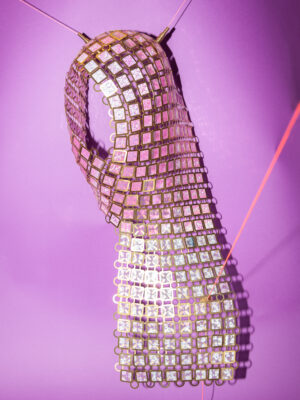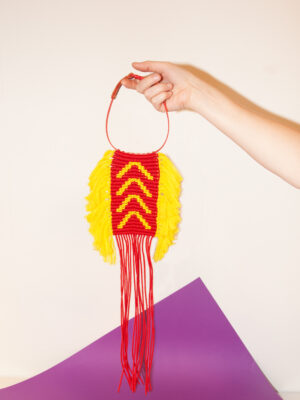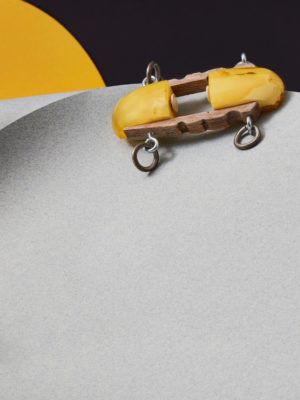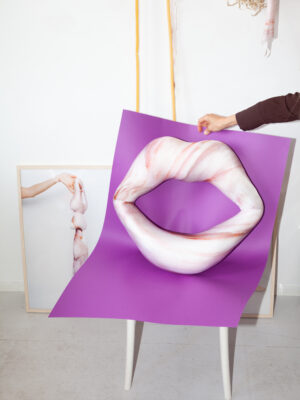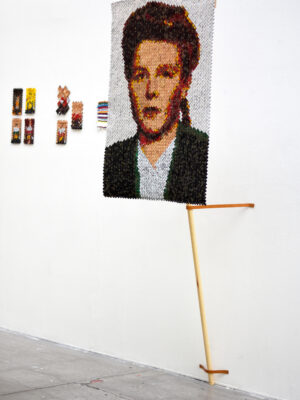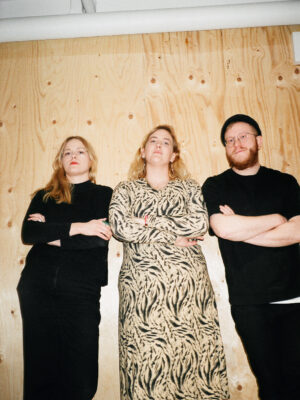
CO: How did you meet and what was the first incentive or perhaps a need that inspired the creation of dotdotdot?
Lisa: Our common denominator is probably Konstfack. Me and Petter have known each other since our first art and craft education ten years ago and we got to know Amy in 2016 when she and Petter became classmates at the Craft Master program at Konstfack, where I also just graduated from.
The idea of dotdotdot was born one autumn night in 2018 at Balthazar, our first office but probably more known as one of the cheapest pubs in Södermalm. I had just started my master’s at Konstfack and they had just graduated, I think we were just longing for something fun and exciting to do. I remember it as a mix of just playing around with fun exhibition ideas but also something bigger with more serious ideas about the field.
We felt that the whole scene in Stockholm was a bit boring which is so strange when we know SO MANY great artists that are the opposite. Also, we had a strong feeling that outside of art schools, the venues and opportunities to make something out of our skills and ideas are rare.
The proportions were wrong. I pass by two football fields on my way 10 min walk to my local food shop but nothing that could remind me of the arts and crafts scene exciting in this country.
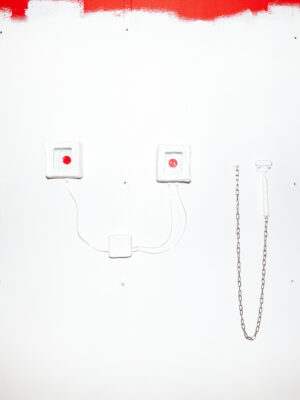
CO: How do you look at the art education now when you are graduates?
Petter: I’m happy it’s over. No, but seriously, the best thing about art education is the exchange between peers. Most of what is interesting and exciting is happening in that meeting. In a way, dotdotdot is a product of that kind of interaction.
Amy: Having studied both at home (London) and in Sweden I have two very different ideas of art school, in the UK for me at least, it felt like a competitive arena with one set and dated way of teaching. Whereas in Stockholm the day to day of school was a more laid back and caring space, which ultimately felt more creative.
The unifying thing about both of my experiences is the non-existence of practical teaching around building and sustaining a career. I think there are glaring holes in art education; all of the ‘boring’ bits new graduates have to navigate for themselves like how to write funding bids, TAXES. We talk about this all the time with our friends and wider circle and it’s the thing that we are all lacking in.
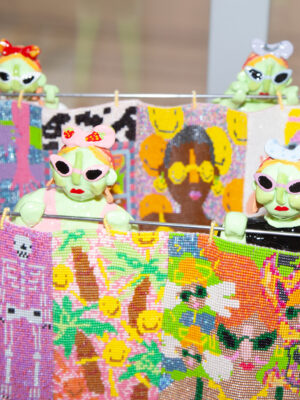
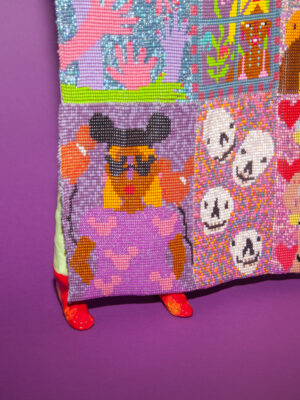
… I think we were just longing for something fun and exciting to do. I remember it as a mix of just playing around with fun exhibition ideas but also something bigger with more serious ideas about the field. We felt that the whole scene in Stockholm was a bit boring which is so strange when we know SO MANY great artists that are the opposite.
CO: Do you recall the first show you’ve ever curated together? Did you have any experience with running a platform or curating before that?
Amy: The first show we worked on together was Loading19, a graduate showcase of material based artists, whilst it felt like that exhibition came out of nowhere as we were offered a space with only a couple of months warning, we had been planning another exhibition ‘Sexy Food’ together for almost a year before that, so that became our second exhibition. We quickly realized as a team we were really good at adapting and calling in a lot of favors! Before that first show as dotdotdot I’d put on an exhibition with Hannah Moores (who was in Sexy Food and was such an incredible help with the set up too, we really couldn’t have done it without her) at Crum Heaven in Stockholm, but nothing on the scale we work with now. That experience taught me a lot about communication and timing, and working with great people.
Lisa: None of us have any professional experience except from our own practices as artists. We are very open with this and think of it as an asset that we represent the crowd we also build this platform for. I’m not so sure a professional curator would think of what we do as curating, but that is not our goal. dotdotdot shows emerging (material based) artists, both because we are passionate about that and also because at times it feels like no one else is/will.
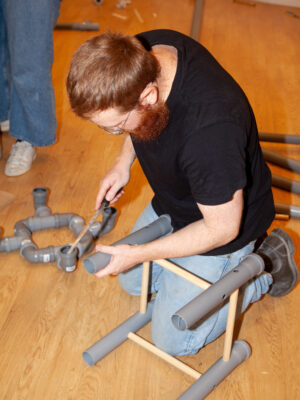
CO: Based on what criteria do you choose artists for your shows?
Petter: The criteria vary from show to show, Loading, as we’ve said before is an open call for graduating artists that work in or can relate to the field of craft/Material based art. In our other shows, we keep the craft/material criteria but the selection process is more revolved around aesthetics and theoretical content. We have experimented with inviting external juries where we encourage them to bring their own criteria into the mix.
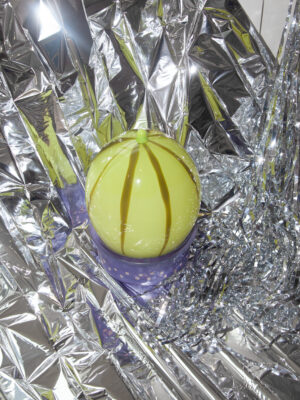
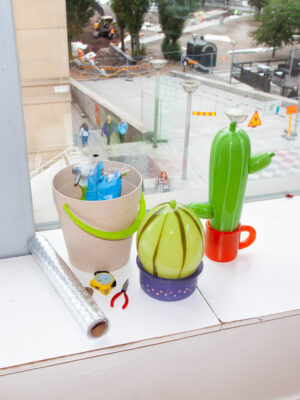
CO: What were the biggest challenges you had to face in the beginning?
Petter: The biggest challenge then, and what continues to be the biggest challenge is funding and time management. The kind of platform we want to create is not one that pays for itself in money. So, we spend a big portion of our time applying for grants or finding new ways to fund what we do. And since we currently run dotdotdot on the fumes of goodwill, there is the problem of finding the time to actually do the work, and have time for our own practices and maybe have a day off or two in between.
Lisa: Finding a space! When we started this, we just wanted to make an exhibition with some of our favourite local artists but that naiveté swept us into the problematics and politics of the field.
No one cared and if they did at first, they went silent as soon as they found out that we didn’t have any money. Except for a real estate agency that works with empty spaces in the city and was happy to lend us one old empty shop space that no paying customer was renting at that moment.
That issue, that the three blue-eyed babies we were, was something we didn’t count for and I think the idea of a platform that could be a part of filling that gap started to grow.
CO: I would like to get a bit more into the infrastructure of dotdotdot as well. How do you operate? Do you collaborate with other institutions or platforms, and how do you fund this platform?
Amy: In order to keep some separation between this and our own practices we have a set day a week we work together, the closer we get to a show this day stretches into full weeks, but as much as possible we have a line between our individual work and our collective work. Early on we naturally fell into loose roles to utilize our skills, but it’s a very fluid operation, we try to adapt around each other’s schedule and workload. We do work with other platforms and institutions, for example, KHVC and The White Pube and have some more collaborations coming up, as dotdotdot it’s important to work with other collectives to incorporate different ways of seeing.
Lisa: You can divide our shows (so far) into themed/narrative-based exhibitions and showcases. In the exhibitions based on a theme, we pick artists that we have seen during the year and that we think can work in an interesting way with that specific theme or narrative the exhibition idea is based on. The process is longer for these shows and we contact the artists about 7 months before the show and we expect them to make a new piece related in some way to the theme.
In the showcase-format like Loading, we either pick work that we think can be interesting together or like we did this year invited all graduates from all levels of art schools to apply for an open call and then invited an external jury to make the selection. In this way, we challenge ourselves to curate an exhibition with work we maybe haven’t even seen before which is interesting for us. This also decentralizes our power position in choosing what will and will not be seen.
What we look for when picking artists is work that we think can move the field of craft forward, we try to look both for skilled work, for example how the artist can handle the material or technique but also work that challenges other ideas. I strongly believe that impressive technical skills cannot singlehandedly make an object interesting enough to break new ground.
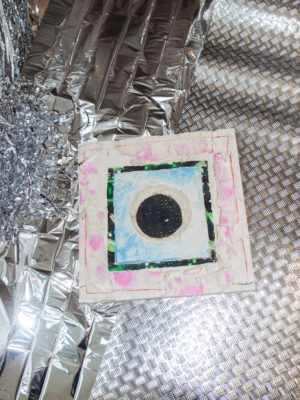
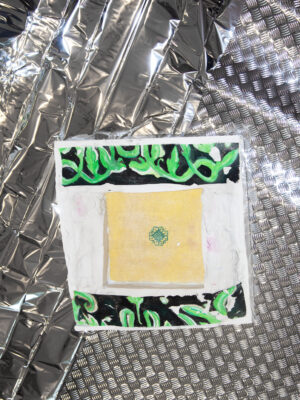
The craft field like the rest of the art world is going through (what I hope to be) a huge change in terms of representation, equality and accountability and I want dotdotdot to be pushing for that change and evolution.
CO: In your powerful and honest manifesto, you talk about, among other things, early-career artists, underrepresented practices, or equality. What are your views on the current craft field and its discourse?
Lisa: I think we mostly just want the craft to have a stronger and more visible/present position in our society. With underrepresented practices, we mean all craft-based or material-based practices which (at least if you choose to use those terms when describing your practice) often have a hard time finding a platform/space/context to exist in and develop their work from. Funding is also tricky in our field. Craft is often considered a lower standing art form if even considered an art form at all and many of our fellow artist-colleagues don’t want to use the Swedish term for craft (konsthantverk) since it is considered low and uninteresting in many important contexts. However, all emerging artists need an extra boost to survive outside of art school. We hope to be one and therefore we focus on that specific crowd.
Amy: I’m quite anti-craft, it’s not my background, I wanted to study ceramics for my masters but stupidly hadn’t considered that I’d be placed in the craft field by doing so. That made it quite fun to be shoved in the middle of the conversation that I find at times completely self-obsessed. The separation between craft and fine art absolutely baffles me, though I think that’s starting to change as to the ‘new wave’ of craft that distinction seems less and less important. The craft field like the rest of the art world is going through (what I hope to be) a huge change in terms of representation, equality and accountability and I want dotdotdot to be pushing for that change and evolution.
CO: In light of recent events, there was a huge influx of new online platforms, viewing rooms, and digital exhibitions. How did you go about it, and what impact do you think this is going to have on such a traditional and sensory field as a craft?
Amy: We thought a lot about if it was a road we should go down too, especially with degree shows being canceled we considered doing something purely digital but it just didn’t make sense for us. Whilst we don’t think of our platform as being traditional, it is important for us to show work IRL, with material-based art so much could get lost in a digital-only format. I also very quickly got overwhelmed and bored with the constant stream of online exhibitions, so I didn’t want to put another thing online that would potentially get overlooked. We were in a fortunate enough position that our planned graduate showcase was at the end of August so we didn’t have to cancel it, obviously, we had to adapt – no opening party, limited guests, and hugely I wasn’t in Stockholm for it as I’d spent lockdown in the UK, so it was planned and executed with one third of us remotely. I think the lasting impact will be smaller, more intimate shows, which I have mixed feelings about, on one hand, I like the idea of hyper-focused shows but I worry it will stray into more of a showroom setting and less dynamic, exciting things will happen in the field.
Petter: Honestly, I don’t think online is the way to go. I mean sure right now there is little else to do, but going forward? No. How would anyone be satisfied with a picture of a work rather than the work itself? Maybe we should all start working with Photography instead if that’s the case. Craft IS the material and for me there is no digital way, other than the novel, to experience that. I’m no enemy of the digital for sure, in my own practice I do basically all my sketching and drawing in 3dsoftware and I see a further digitalisation of processes and methods as welcome. But at the end of the day, we make things in materials, and that’s what I want to experience.
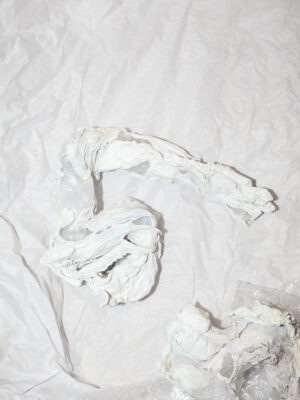
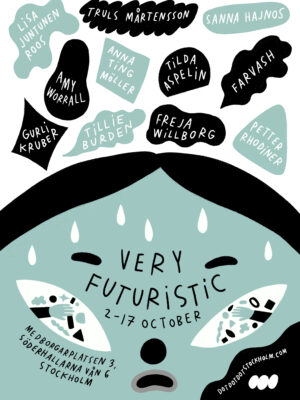
CO: For the Stockholm Craft Week, you are curating the show called ‘Very Futuristic’. You invited the illustrator Lisa Ewald to make a comic strip about a craftsperson in the future. Can you talk a little bit about the show? How do you imagine the future of crafts and a futuristic craftsperson/artist?
Amy: Last year we had ‘Sexy Food’, invited artists were asked to respond to Homer’s epic The Odyssey, one of the foundations of western culture so this year we decided to go the opposite way into the future. We asked Lisa to make a comic strip about a group of craftspeople in the distant future that we then sent out to our artists as their source material. It is really fun to work with a narrative as for us as curators we get to watch and be part of a group of incredible artists’ creative process from start to finish which is a real privilege. Our October exhibitions are the BIG ones for us; they are the only ones we put ourselves in so our workload is massive. So, we’ve been thinking a lot in our own practices about what the future of craft looks like for us. My imagined future is a party that at any moment is going to become a brawl.
Petter: Personally, I look forward to a future of makers, where the means, powers and incentives to make our own world have been re-conquered, after the hypnotising lull of industrial society.
CO: And what is the future of dotdodot? Do you have any specific goals or plans for the coming years?
Lisa: Dotdotdot is the common child of our three individual practices and where dotdotdot ends up depends on where we end up as artists. At the moment we need something where we can elaborate our ideas about craft, what it is, why that is and who owns the definition. We are still so much at the beginning of building something that we don’t even know the shape of yet, so stay tuned, I guess.
